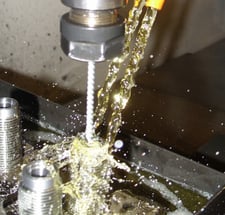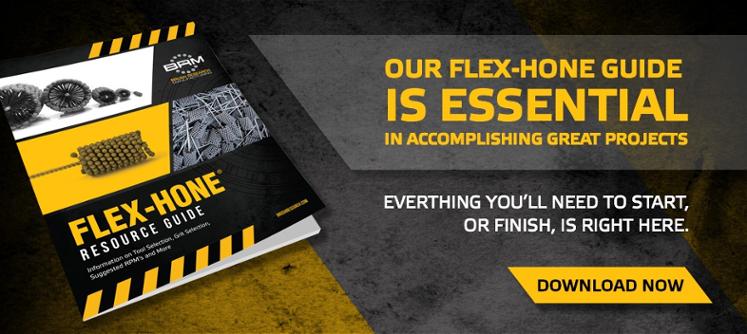 Flex-Hone® tools always require the use of a lubricant. If you don’t use the tool wet, you’ll load up your flexible cylinder hone with tiny bits of abrasive material and cast-off metal. Using the tool dry can also cause debris to become embedded in the workpiece. The lack of a lubricant can generate excessive heat and shorten tool life, too.
Flex-Hone® tools always require the use of a lubricant. If you don’t use the tool wet, you’ll load up your flexible cylinder hone with tiny bits of abrasive material and cast-off metal. Using the tool dry can also cause debris to become embedded in the workpiece. The lack of a lubricant can generate excessive heat and shorten tool life, too.
To prevent problems like tool loading, excess heat, and premature wear, always use a good-quality lubricant like BRM Flex-Hone® oil. Never use solvents, and remember to lubricate the tool generously and properly. By following the advice in this article, you can hone more efficiently and cost-effectively.
1. Use a Good-Quality Lubricant
Flex-Hone® tools require the use of a good-quality lubricant. Examples include:
- Water soluble oils
- Mineral oils
- Cutting fluids
- Tapping fluids
- 10-30 weight motor oil (for use with engine cylinders)
- Hydraulic brake fluid (for use with hydraulic brake cylinders)
When working with finer surface tolerances, better quality honing fluids are required. For best results whenever you hone, Brush Research Manufacturing (BRM) recommends using Flex-Hone® oil.
2. Check Out Flex-Hone® Oil
 Flex-Hone® oil is specially-formulated for use with all types of metals. Unlike other lubricants, Flex-Hone® contains the following ingredients.
Flex-Hone® oil is specially-formulated for use with all types of metals. Unlike other lubricants, Flex-Hone® contains the following ingredients.
- Special blend of honing and lapping oil
- Lard oil to prevent galling of aluminum
- Moisture dispersant
- Non-ionic surfactant wetting agent to ensure complete surface lubrication.
- Special additive to help keep cuttings and contaminants in suspension.
- Emulsified, anti-bacterial agent
Flex-Hone® oil is available on-line and sold in 1/2 pint, quart, gallon, and 5 gallon plastic containers.
3. Never Use Solvents
Never use solvents with Flex-Hone® tools. Simply put, they tend to degrade the tool’s adhesive bonds – and that can reduce tool life and performance.
4. Lubricate Generously and Properly
Don’t skimp by applying a few drops of honing oil. Instead, lubricate the Flex-Hone® tool generously. Proper lubrication helps keep heat to a minimum, prevents the tool from loading, and suspends the abrasive material.
Also, apply the lubricant prior to rotating the tool and entering the cylinder bore. If you’re using the Flex-Hone® with a handheld electric drill in a garage or a machine shop, consider using some plastic sheeting to catch any splatter. Another great tip is to apply the oil over a trash can. Once the hone is in the hand drill, place the hone inside the trash can and spin off the excess oil. This will limit the amount of additional splatter once you get to honing.
Get the Flex-Hone® Guide
We hope you’ve found this information helpful, and encourage you to read the other articles in this series.
- Ten Tips for Cutting Deburring Costs with Flex-Hone® Tools is the introduction to our series.
- Flex-Hone® Tips for Speed and Stroke Rate explains how to impart an optimum cross-hatch angle.
For more information about how to select and use Flex-Hone® tools, download the Flex-Hone® Resource Guide.









